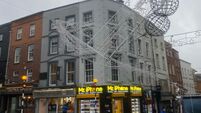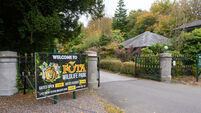Lego model of one of Ireland's most iconic buildings cost €3,100 to build

Elodie Kerrigan, 8, and Katherine McSharry, acting director of the National Library, at the unveiling of the large-scale Lego model of its building on Kildare Street, Dublin 2. Picture: Marc O’Sullivan
An epic Lego model of one of Ireland’s most iconic buildings cost the National Library just €3,100 to have built.
The incredible construction, which measures almost 6ft x 6ft, and stands 2ft-tall, was built to give a glimpse of how the famous National Library buildings in Dublin will look after redevelopment.
The remarkable artwork — which will remain on display at the main entrance hall of the Kildare Street library for the rest of the year — was built by Lego masters David and Breda Fennell.
Invoices submitted to the National Library for the project reveal the entire project cost less than €5,000, with only €3,120 paid for the model itself.
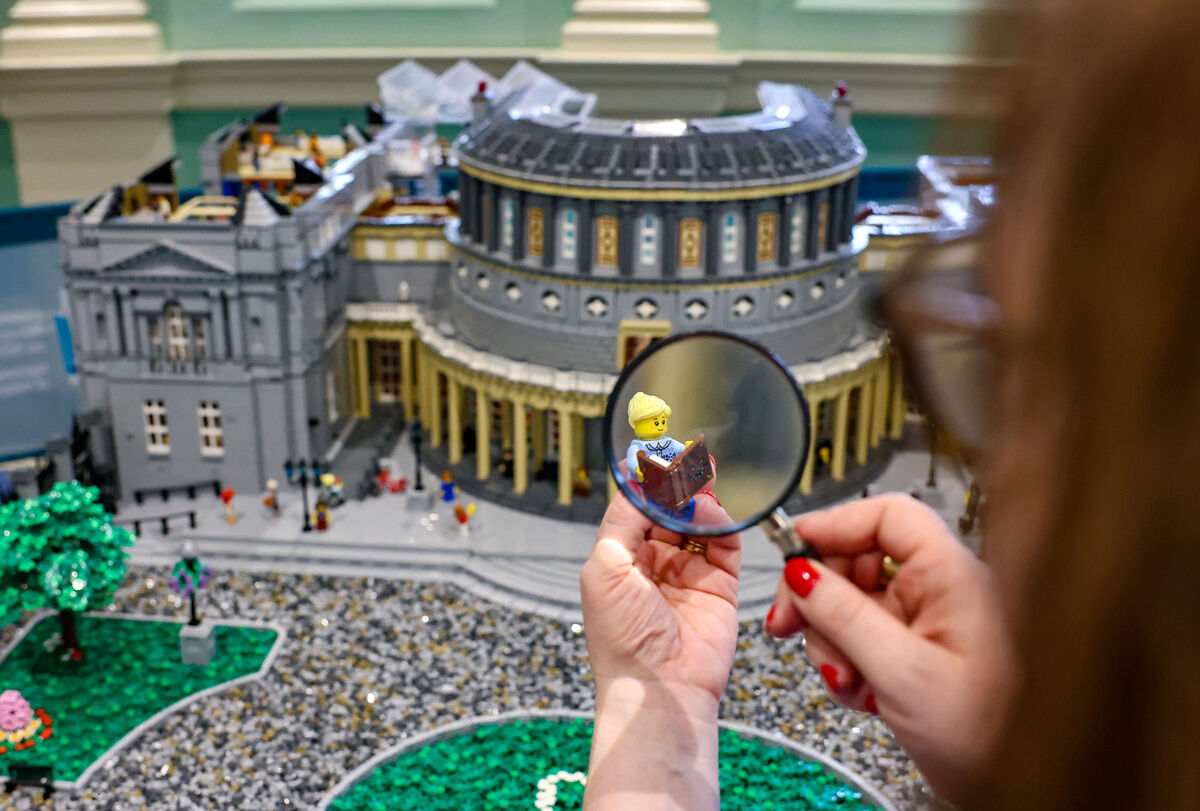
A further €498 was spent on specialist transport to bring the delicate piece of work from the studio to the library.
Three large Lego title boards were also needed and cost €197, while display boards installed around the model were expected to cost €314.
The library also incurred a €553 fee for photography services, according to records it released.
The model itself used Lego train tracks to ensure it remained stable while the entrance floor was internally supported with larger Duplo bricks.
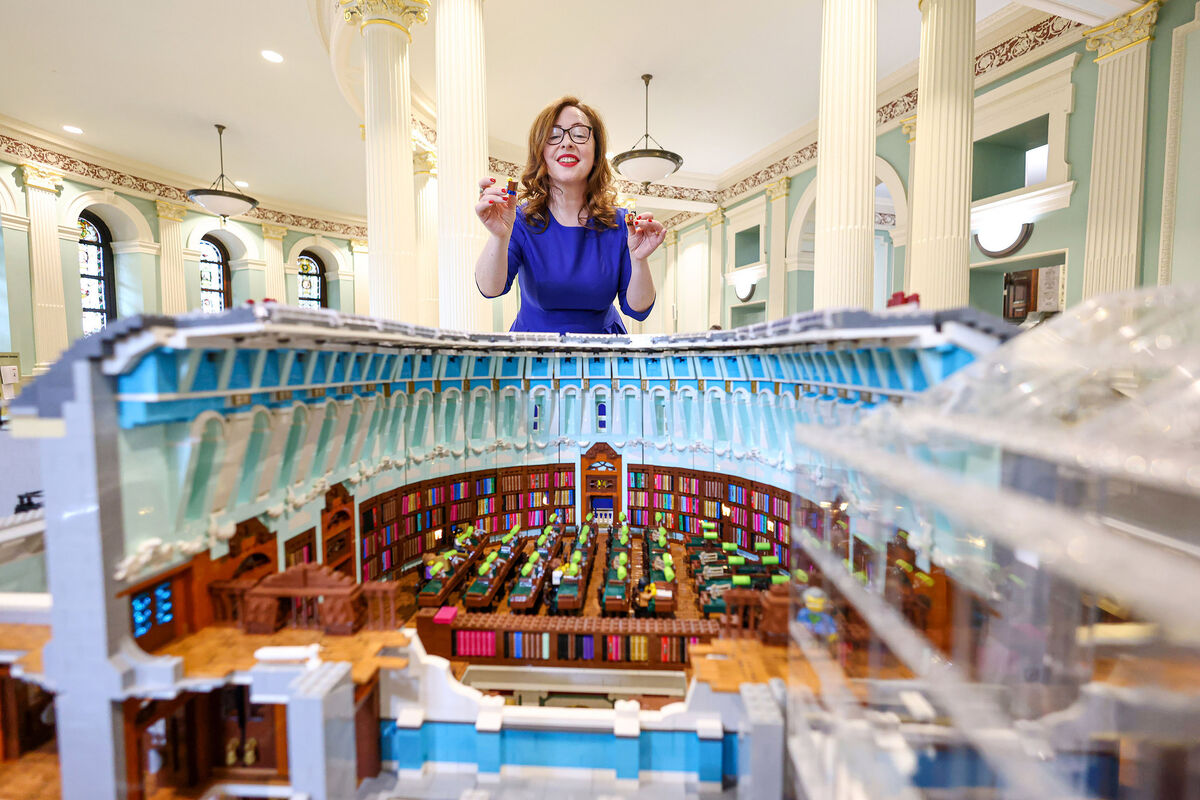
Other items used in its construction included Bart Simpson catapults, Lego sausages, vintage pieces, and dice tiles to create dominoes.
Very rare gold pieces were also utilised to create an Irish harp with insignia from made use of for decoration of the exterior.
The model was commissioned alongside ongoing redevelopment of the main National Library buildings.
The first phase of the works has already been completed and involved the moving of 350,000 books, newspapers, and periodicals from the Victorian ‘West Wing’ of the library to a new safe storage area.
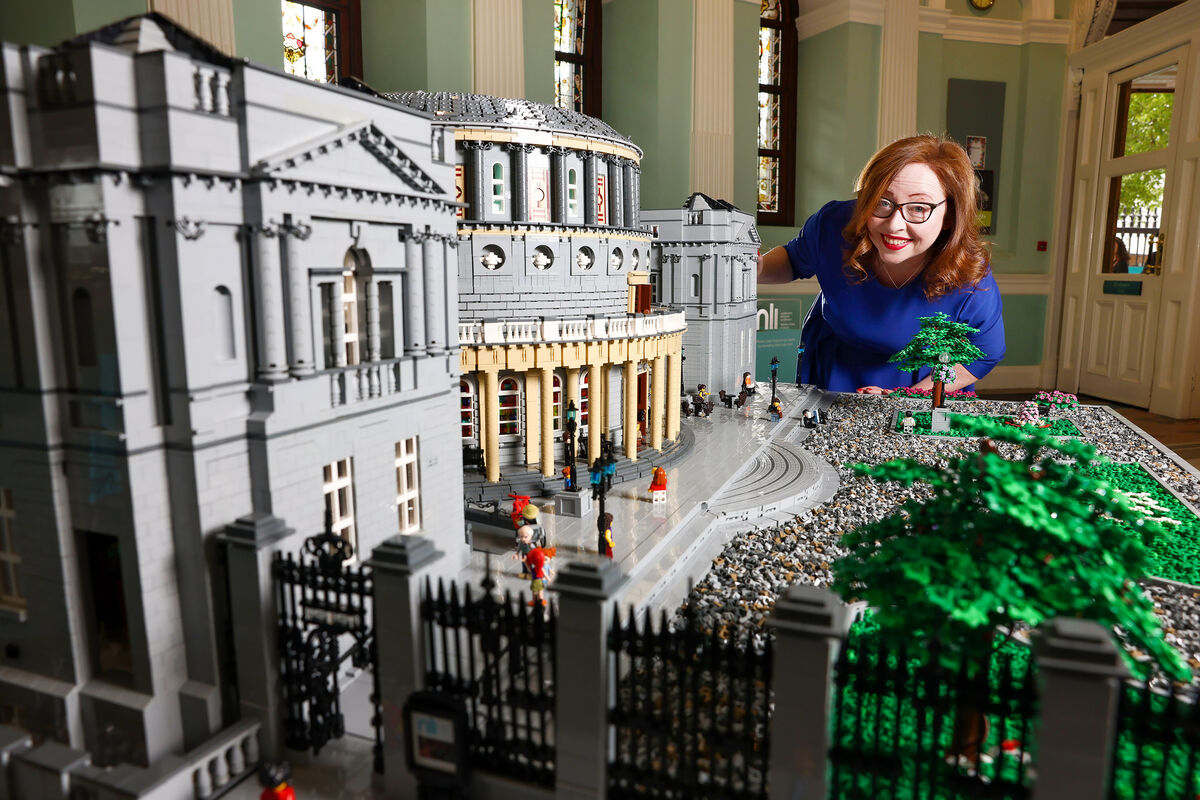
The next stage will see the West Wing repurposed as six storeys of exhibition and public engagement space, with universal access also being made available.




